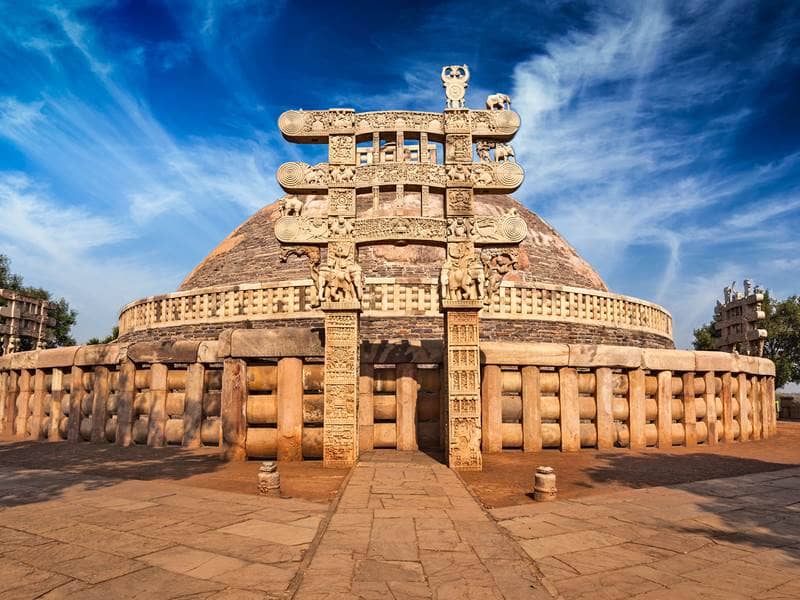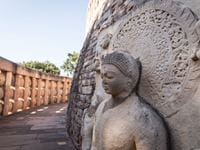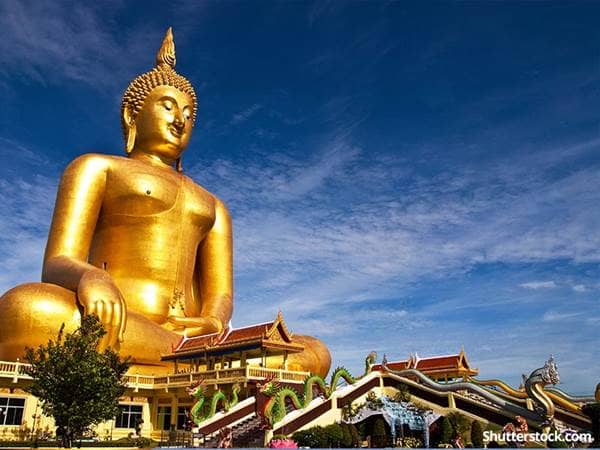
The 100 Most Holy Places On Earth
Buddhist Monuments at Sanchi





Also Known As:
Sanchi Stupa
Associated Faiths:
Buddhist
Accessibility:
The exterior complex of the stupa is open to visitors and is an expansive complex. However, visitors cannot enter the actual stupa.
Annual visitors: 200,000
History
The Sanchi Stupa is an ancient Buddhist site in the small town of Sanchi—in the Indian state of Madhya Pradesh (which is part of central India). While the significance of the site (as a center of pilgrimage) dates to the pre-Christian era, it was lost or forgotten (because of the gradual decline of Buddhism in India). The stupa was only rediscovered in the early 19th century by a British military officer serving in the region. Since then, it has once again become an important site for Buddhists, after laying fallow for approximately 800 years.
On a hilltop that overlooks the little town of Sanchi, are the remains of a once thriving Buddhist place of pilgrimage. Indeed, the walled-in hilltop contains a number of impressive monuments and sculptures—including what is known as the “Great Stupa”—constructed in the 3rd century BCE by Emperor Ashoka (the first Buddhist emperor of India). That stupa is said to encase an earlier structure built on that same site—to house relics associated with the Buddha. In the first century BCE, four elaborate arched gateways were created, containing important carvings which depict scenes from the Buddha’s life, as well as other events important to Buddhist history. Around the site are also two smaller stupas (containing the remains of two of Sidhartha’s most devoted disciples). Also located on the hill are the remnants of various temples and a former Buddhist monastery. The site’s “Great Stupa” is one of the oldest surviving stone structures in all of India.
There is no evidence that Sidhartha Gautama (the historic Buddha) ever visited or spent time in Sanchi. Nevertheless, the “Great Stupa” on the site is said to contain relics of Sidhartha Gautama. This is possible because, more than a century after the cremation of the Buddha, King Ashoka (whose wife was from Sanchi and who held their wedding in the town) had Sidharth’s ashes and other associated relics distributed to 84,000 stupas. Consequently, the Sanchi Stupa—which was commissioned by Ashoka and which had a sentimental place in the heart of the King—naturally would have a portion of those ashes, if not other relics as well.
In addition to being able to view the three stupas atop the Sanchi hill, one can wander the site, seeing the remains of various once important temples, shrines, statues, carvings, and monastic lodgings. A short distance from the base of the hill is an archeological museum. It is said to house various artifacts unearthed when the site was rediscovered (in the 19th century) by General Taylor of the Bengal Cavalry. As the site was renovated, various things found atop the hill were moved to the museum for viewing and safekeeping.
Religious Significance
Stupas are an important part of Buddhism, originally used by Buddhists to house relics associated with the “historical Buddha”—Sidhartha Gautama (circa 563-483 BCE). According to tradition, Emperor Ashoka (circa 268-232 BCE) divided the Buddha’s remains into 84,000 parts, so that a relic of Sidhartha could be placed in 84 thousand places throughout the world. So, initially, all religiously built stupas were somehow connected to the most famous Buddha, Sidhartha Gautama. However, over time, stupas were built to honor other Buddhas and saintly figures as well. This is why the hilltop of Sanchi has two stupas, one in honor of Śāriputra and another in honor of Maudgalyāyana (who lit the Buddha’s funeral pyre, cremating him).
Stupas have become “sacred sites” and “places of pilgrimage” specifically because of what they house. However, they are also perceived as holy because of certain miraculous events which are believed by practitioners to have taken place at the site of their construction, or in the lives of those whom they honor. So, for example, on the four gates to the Sanchi Stupa one finds depicted various miracles associated with the life of the Buddha—including his miraculous birth and seven incarnations. Sidhartha’s life has many components which would qualify as “miraculous” and which provoke awe from and veneration by practitioners of Buddhism.
Worship at stupas traditionally consists of believers circumambulating the stupa in a clockwise direction, recognizing that the central relic of the stupa is enshrined therein. For some Buddhists, the relic—in whatever form it may be—holds the powers of the deceased holy person to whom the relic is attached. Thus, visits to that stupa can activate the power of the deceased in the life of the believer.
The presence of an actual piece of the “historical” Buddha’s remains—or the remains of another Buddha (as in the case of the two smaller stupas on this site)—creates “sacred space” for those who visit a stupa. Not only do pilgrims traditionally believe that they can tap into the power present therein, but they also feel that they are walking on “holy ground” during their pilgrimage to one of the 84,000 stupas throughout the world.






